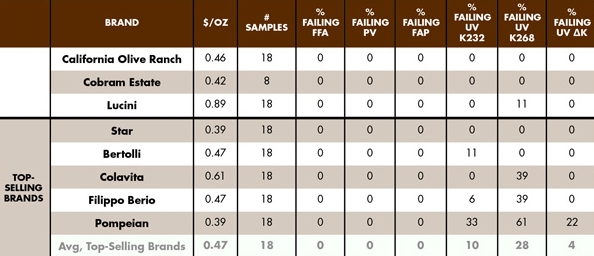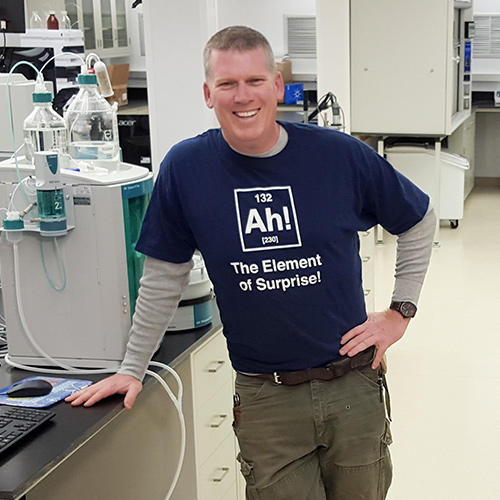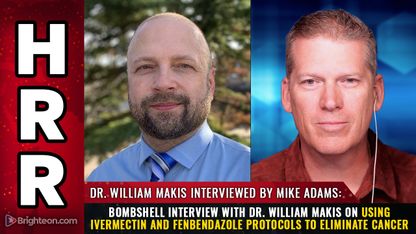
You can read the full report at this link (PDF).
As a food scientist, I can tell you this report is authoritative. It reveals the numerous methodologies used for assessing the authenticity of popular olive oil brands. However, all olive oil consumers should be aware that one of the "scientific" tests is an "IOC-accredited sensory panel," which basically means people tasting the oil and using their tongues as sensory detectors.
By definition, "sensory panels" are subjective. The UC Davis report fails to mention that "sensory panels" are really just groups of people tasting the products and writing down what they experience. Calling this process an "IOC-accredited sensory panel" gives it far more weight than it probably deserves, in my opinion. Nevertheless, olive oil tasters who serve on such accredited boards do possess extraordinary sensory faculties that have been fine-tuned over many years (or decades) of tasting experience. And the human tongue (and brain which is connected to the tongue) is an extraordinary sensory instrument in its own right. Still, as a laboratory scientist, I would strongly prefer scientific data derived from instrument analysis of olive oil samples.
The UC Davis study also ran UV analysis of the olive oils, but what no one is talking about is that relatively few olive oil products failed the instrument analysis tests. While 73% of the olive oil samples failed the taste test, 100% of the samples "passed the IOC chemistry standards for free fatty acids (FFA), fatty acid profile (FAP) and peroxide value (PV)," says the report.
Results were mixed with other tests:
70 percent of the samples from the five top-selling imported brands failed the German/Australian 1,2-diacylglycerol content (DAGs) test and 50 percent failed the German/Australian pyropheophytin (PPP) test. All of the 18 samples of the California brand passed the DAGs test and 89 percent of the samples passed the PPP test. The Italian premium brand failed the DAGs and PPP tests in about one-third of the samples. The Australian brand passed the DAGs test in all cases and failed the PPP test in all cases.
As Table 3 from the report shows here, very few samples failed the IOC chemical tests:

Olive oil isn't "fake" as much as it's oxidized, cut with cheaper oils and damaged by heat and light
The upshot of all this is that even this UC Davis test doesn't conclude that top olive oil brands are "fake" as is being frequently reported. The reality is far more complicated.
Even the UC Davis report reaches a mixed conclusion, stating that the olive oil samples were more "damaged" than "fake." Per the report's conclusion:
Our testing indicated that the samples failed extra virgin olive oil standards for reasons that include one or more of the following: (a) oxidation by exposure to elevated temperatures, light, and/or aging; (b) adulteration with cheaper refined olive oil; and (c) poor quality oil made from damaged and overripe olives, processing flaws, and/or improper oil storage.
In other words, the olive oil you're buying at the store probably probably started out as legitimate olive oil, but due to high heat processing, oxidation, exposure to light and cutting with inferior oils, what you end up getting is nothing like the original oil that was squeezed out of the olives.
In my view, this makes popular olive oil brands more "damaged" than "fake." That's my scientific analysis of this report, based on considerable experience in my ISO-accredited laboratory, where I have very strong expertise in HPLC, LC-MS, ICP-MS, UV detectors and other instrument analysis methods for food and environmental samples.
Where do you get REAL olive oil that isn't damaged?
The simple truth in all this is that olive oil is supposed to BITE your tongue with a strong, pungent, rich flavor that wakes up your senses and makes you go, "WOW!" If it doesn't do that, it's not "intact" olive oil.
Nearly all the supposed "olive oil" you buy at the grocery store is total junk. It tastes like canola oil, which is bland and insulting. That "bulk" olive oil you're buying at Costco is mostly total crap, just FYI. You think you're saving money on olive oil at Costco? The joke's on you: That's not really "full" olive oil.
If you want real olive oil, you have to go to the growers directly. For example, Oliflix produces olive oil in Spain. You'll find other growers in California, Texas and elsewhere.
Finally, for those who don't know, olives grow on trees. The fact that so few people know that is yet more astonishing evidence of how disconnected people are from reality.
To learn more about real food science, check out my book Food Forensics.

Mike Adams (aka the "Health Ranger") is the founding editor of NaturalNews.com, a best selling author (#1 best selling science book on Amazon.com called "Food Forensics"), an environmental scientist, a patent holder for a cesium radioactive isotope elimination invention, a multiple award winner for outstanding journalism, a science news publisher and influential commentator on topics ranging from science and medicine to culture and politics.
Mike Adams also serves as the lab science director of an internationally accredited (ISO 17025) analytical laboratory known as CWC Labs. There, he was awarded a Certificate of Excellence for achieving extremely high accuracy in the analysis of toxic elements in unknown water samples using ICP-MS instrumentation.
In his laboratory research, Adams has made numerous food safety breakthroughs such as revealing rice protein products imported from Asia to be contaminated with toxic heavy metals like lead, cadmium and tungsten. Adams was the first food science researcher to document high levels of tungsten in superfoods. He also discovered over 11 ppm lead in imported mangosteen powder, and led an industry-wide voluntary agreement to limit heavy metals in rice protein products.
Adams has also helped defend the rights of home gardeners and protect the medical freedom rights of parents. Adams is widely recognized to have made a remarkable global impact on issues like GMOs, vaccines, nutrition therapies, human consciousness.
Please contact us for more information.























